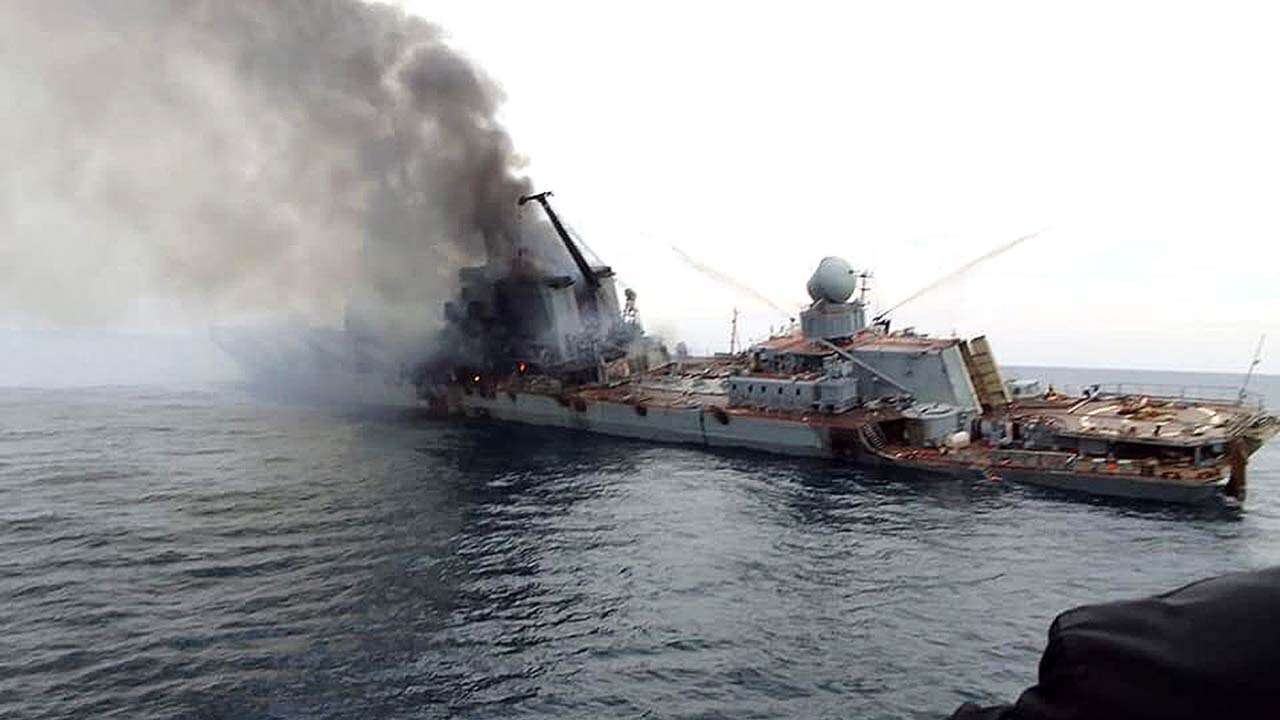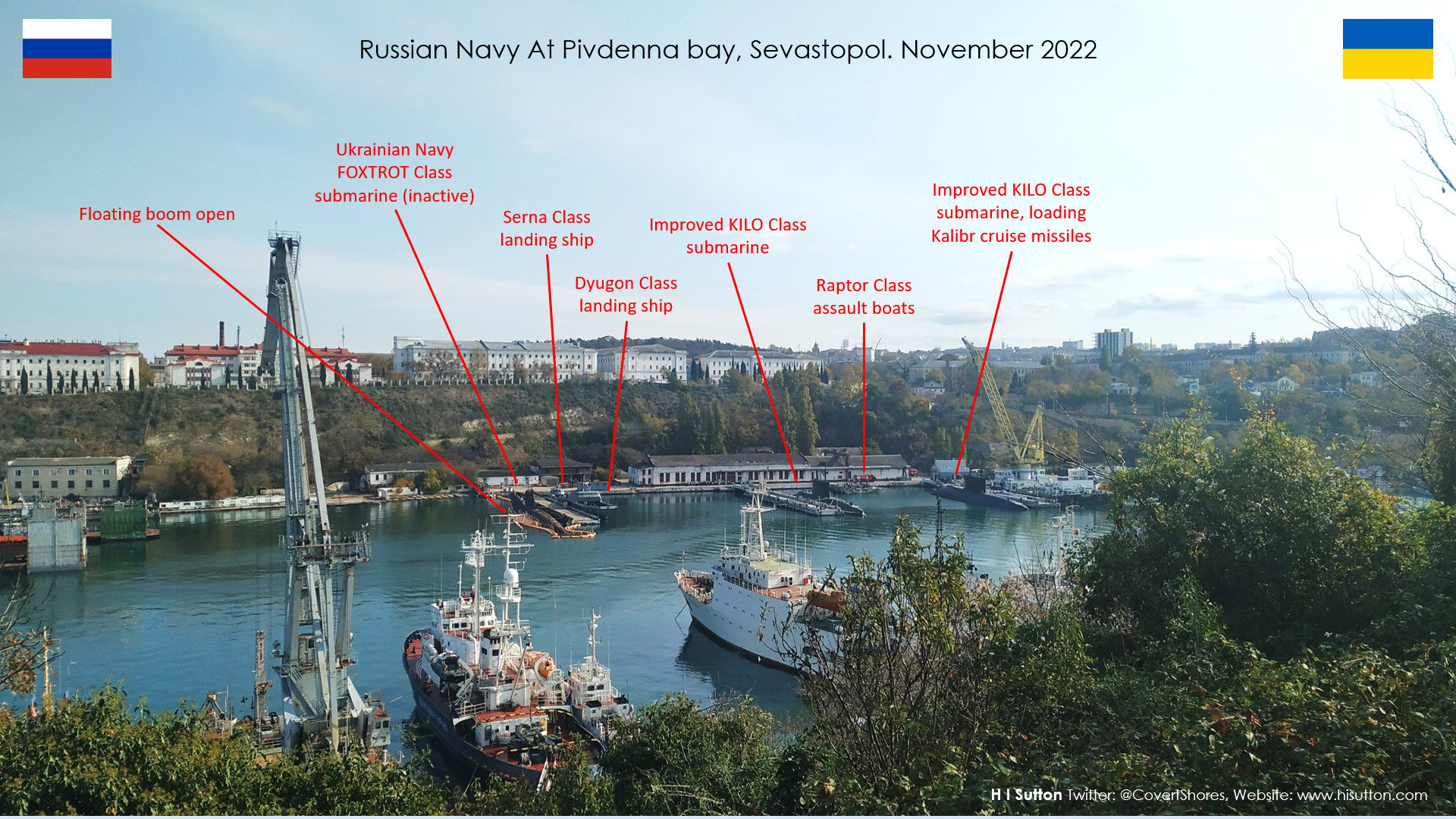While the conflict in Ukraine has been chiefly fought on land and in the skies, a few hostilities also played out in the naval domain.
Advertisement
However, with the conflict entering its second year, two senior American Navy officials assess that going ahead, naval warfare is only poised to decrease because of Ukraine’s success in denying Russia’s Black Sea Fleet the space to mount attacks on Ukraine’s coastline freely.
“You’ve seen the Russian effectiveness from the maritime [domain] has been declining. The very reason [is] that the Ukrainians have become better at targeting and using the weapons that we provided them,” said Chief of Naval Operations Admiral Michael Gilday earlier this month. The Ukrainians have “limited the Russians maneuverability to put themselves in a better position.”
This assessment by Gilday is corroborated by US Navy’s senior intelligence official, Rear Admiral Mike Studeman, who said during the West 2023 conference that the “battle so far for the Black Sea… [is] largely over.”
“The A2AD, anti-access area denial, was achieved by the Ukrainians, and therefore, you have a marginalization of the maritime activities,” said Studeman, the commander of the Office of Naval Intelligence.
“You have long-range fires that the Black Sea Fleet … will launch into Ukraine, but by and large, there’s been a neutralization of many of the capabilities here that the Russians had intended to use,” Studeman continued.
Advertisement

Experts also agree with Gilday and Studeman’s assessments. For instance, Dmitry Gorenburg, a senior researcher at the Center for Naval Analyses (CNA), said that the Russian Navy had been reduced to occasionally firing precision-guided missiles Ukraine’s energy and other critical infrastructure.
“The problem with that is that there’s a limited mound of those missiles left in Russia’s arsenal, so even that side is somewhat less significant than maybe it was a few months ago,” Gorenburg added.
It is debatable whether Russian attacks on Ukraine’s critical infrastructure have been merely occasional because Russia appeared to have increased the frequency of its large-scale missile and drone offensives ahead of and during the Winter months to deprive Ukraine of energy. That objective seemed to have been realized, so these attacks were effective to a large extent.
However, there has been an observed shift in the Russian naval posture in the Black Sea owing to Ukrainian attacks. There have been instances where the Russian Black Sea Fleet was forced on the back foot because of Ukraine’s missile and drone attacks.
Advertisement
READ MORE
Russian Navy On Backfoot In The Black Sea
Ukraine has dealt severe blows to the Russian Navy during the ongoing war. The most significant would be the sinking of the Russian Moskva missile cruiser in the Black Sea.
On April 13, 2022, the Moskva cruiser went down shortly after it was seriously damaged by two Ukrainian-made Neptune coastal anti-ship cruise missiles, thus marking an end to an almost 30-year service of the Soviet-era 11,490-ton SLAVA Class cruiser.

Moskva was one of the most powerful warships in the Russian Navy. Besides being the floating command and control center, Moskva provided long-range and mobile air defense protection for the entire Black Sea Fleet.
Therefore, shortly after the sinking of Moskva, five Russian warships in the northern part of the Black Sea had reportedly moved further away from the Ukrainian coast.
Experts at the time suggested that Kremlin was reluctant to risk these ships after the loss of Moskva and wanted them near Crimea, where Russian ships enjoy the protection of shore-based S-400 surface-to-air missile batteries and the Russian Navy’s Su-30 fighter jets.
After that, from July onward, Ukraine began mounting offensives on the Russian Navy headquarters in Sevastopol on the Crimean peninsula. These attacks were carried out using aerial and water-borne drones.
The most significant of these attacks were conducted on October 29, which entailed 16 Ukrainian drones, including nine unmanned aerial vehicles (UAV) and seven autonomous maritime drones.
The governor of Sevastopol, Mikhail Razvozhaev, said that the attack on Sevastopol and the Black Sea Fleet was the biggest since the beginning of the Russian special military operation in Ukraine.
Following the attack, at least as long as mid-November, the Black Sea Fleet’s Admiral Grigorovich-class frigates, the largest and most capable ships in the fleet then, were observed mainly at the port, according to Independent Naval Analyst H.I. Sutton.
Advertisement

One of these, Black Sea flagship Admiral Makarov, was believed to have sustained some damage during the October attack.
#UKRAINE: REMARKABLE VIDEO OF TODAY’S ATTACK ON THE RUSSIAN SEVASTOPOL NAVAL BASE.
UKRAINIAN UNCREWED SURFACE VESSELS (DRONE BOATS FILLED WITH EXPLOSIVES) APPARENTLY MANAGED TO HIT A PROJECT 11356R FRIGATE (PRESUMABLY ADMIRAL MAKAROV) & THE IVAN GOLUBETS PROJECT 266M MINESWEEPER. PIC.TWITTER.COM/6NJVKWVGKW— 🇺🇦 UKRAINE WEAPONS TRACKER (@UAWEAPONS) OCTOBER 29, 2022
The Russian Ministry claimed to have destroyed all nine UAVs and seven unmanned marine vehicles and reported minor damage to Ivan Golubets minesweeper of the Black Sea Fleet.
In addition to the Ivan Golubets minesweeper, OSINT’s reports based on the videos of the attack suggest the Ukrainian Unmanned Surface Vehicle (USV) filled with explosives also managed to hit a Project 11356R frigate (presumably Admiral Makarov).
It is important to note here that Admiral Makarov was expected to succeed the Moskva cruiser as the flagship to maintain fleet command and control of the Russian Black Sea fleet because the Russian Navy could not bring in the other ships of the same class as Moskva.
This was because Turkey, which controlled access to the Black Sea via the Bosphorus Strait under the Montreux Convention, had decided not to let the Russian warships enter during the war.
Advertisement
Observed Russian Naval Build-Up In The Black Sea
Of late, however, experts are observing a build-up of the Russian Navy in the Black Sea, which includes transporting several Raptor assault boats from the Baltic fleet to the Black Sea via road in January.
Apart from that, on January 11, a group of Russian warships, including the Project 11711 Ivan Gren class landing ship, Pyotr Morgunov, the largest amphibious ship in the Black Sea, and three Project 636.3 Improved-Kilo class submarines, was observed leaving their base at Novorossiysk, which is a port city on the Black Sea in southern Russia.

Experts who observed this departure of ships from Novorossiysk hinted at some form of Russian amphibious landing operation, possibly targeting southwestern Ukraine to establish a land bridge to Transnistria Russian-supported unrecognized state in Moldova that borders Ukraine.
Also, between February 8 to 9, six Russian warships reportedly entered the Black Sea as part of a build-up, transiting the Bosphorus, suggesting that Turkey has possibly allowed the Russian warships to enter the Black Sea via the Bosphorus Strait. These warships reportedly included landing ships and an Improved KILO class submarine.
Advertisement